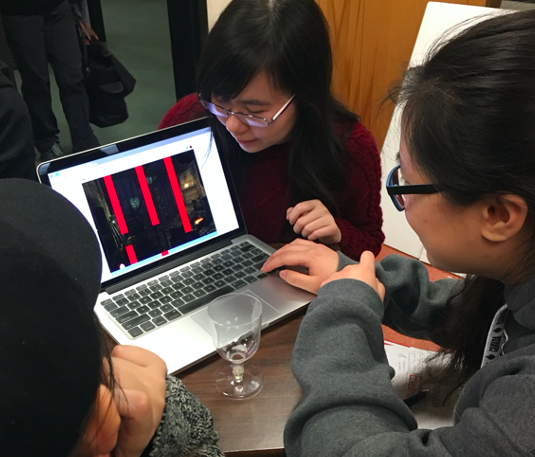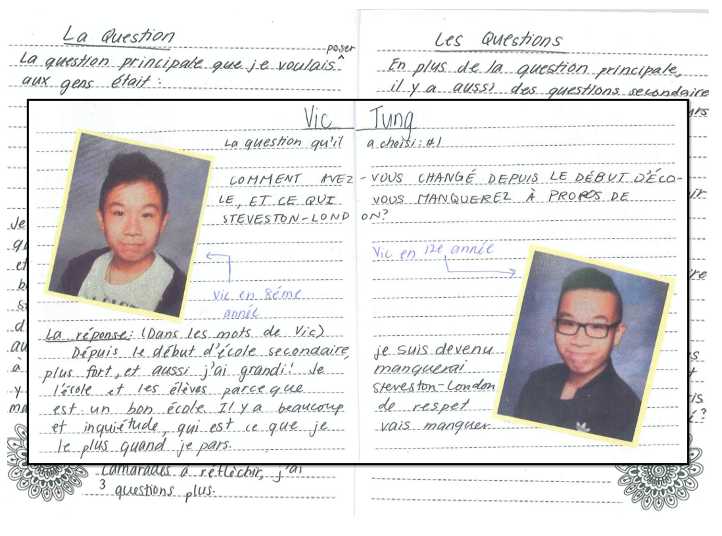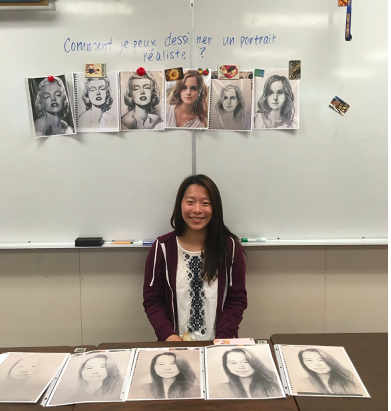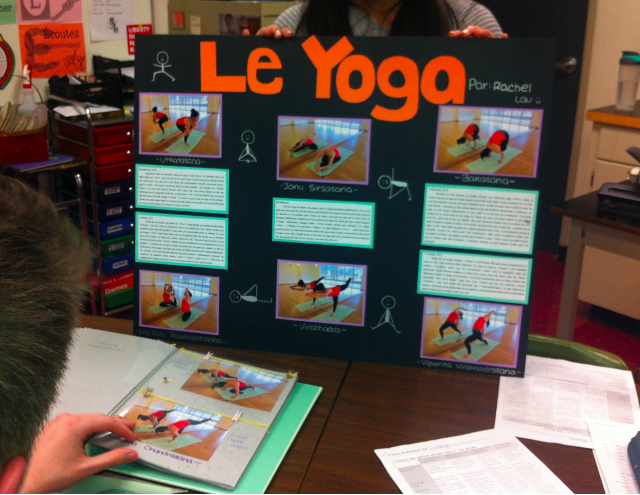Your language-teaching mission, should you choose to accept it, is to provide fun activities so that your students can celebrate Halloween and/or enjoy spooky characters and legends.
The Social Studies department was the Flinstone Family and I was Baby Pebbles!
I LOVE Halloween sooooo verrrry much. I know that there are a lot of reasons not to celebrate it in schools, though the schools I’ve taught in have gone whole hog into Halloween, with costume contests (for students and teachers!) and a big dance thrown by the Student Council. In my classes I’ve always made the activities optional, though I realize in hindsight I could’ve been more in tune with how the ‘opt-out’ formula doesn’t work when kids are afraid of being different than their peers. When I return to the classroom, I think I’ll have different stations set up with equally-as-fun options. Also, probably a lot more discussions about cultural appropriation and stereotyping when it comes to costumes!
In a language class, depending on the target-language and the cultures that speak it, Halloween can also be a rich topic of discussion about how traditions change over time (see resources for advanced learners below), as well as attitudes towards the dead. Even if Halloween isn’t your thing, there is some fun in telling spoooooky stories at any time during the dark winter months.
In the interest of my target language, did you know that there is a France connection to the origin of Halloween? France and Belgium have traditionally celebrated All Saints Day, but have adopted more and more of the North American Halloween. There are many Halloween traditions in Quebec, much like the rest of Canada. Haiti has La fête des Guédé, a voodoo Day of the Dead, though I’ve read that many Haitian Christians participate as well.
Halloween Activities for Beginners:
Truly one of the best pumpkins I’ve ever carved… Jacques O’Lantern!
For beginners, vocabulary is really the name of the game. Usually I start off with a ‘vocabulary scramble’ where I post pictures around the room with numbers on them. Students then walk around the room and write the number (and translation if they need it) on the lines. It gets everyone up and walking around, and if I have a particularly competitive class I’ll make it a race to the finish with a prize.
RESOURCE: Halloween vocabulary scramble
Vocabulary can then be reinforced with a vocabulary sudoku. This can be adapted to any language: just “search, find, replace” the vocabulary words so that “la lune” becomes whatever a moon is in your target language and then the whole thing works!
RESOURCE: Halloween Sudoku
I then add grammar practice to the newly gained vocabulary through a Halloween graphic. Again, this can be adapted to any new language if that language uses comparisons, superlatives, and/or prepositions. It’s just a Halloween-based image that has students making relationships between things (the bat is smaller than the witch; the bat is to the right of the witch). There’s a blank space in the middle for students to draw whatever vocab they want to add to the picture.
I found this example in a book, took a picture, and wish I could attribute it to the original author. Does anyone recognize this? I think it was by the same publisher that does “Les 10”
RESOURCE: Halloween Prepositions & Halloween Prepositions Key
RESOURCE: Halloween Comparisons and Superlatives (this one I ended up hand drawing horns on the bald guy to be ‘the devil’)
I’ve always wanted to do this activity, but never got around to it, but having students create “wanted posters” for spooky characters would be, I think, a lot of fun. It’s especially helpful to reinforce descriptive vocabulary.
RESOURCE: Strange Creatures Wanted Poster
This is only for the ELL teachers out there, though the discussion question part could be modified for any language, and perhaps even the listening part if you were very keen, but I really enjoy discussions with students about UFOs! I feel like I learn a lot about them from how they would react to strange beings appearing on Earth. And if you really want to further the lesson, there’s a lot of interesting discussions to be had around modern immigration attitudes.
RESOURCE: ELL Aliens Activity
This is only for the French teachers out there, but I couldn’t let this list be without mentioning that the classic “C’est l’Halloween” by Matt Maxwell is on YouTube. It’s great for beginners as it has simple vocabulary, clear voice, and a chance to practice counting 1-18!
RESOURCE: C’est l’Halloween PPT (made by eTools for Teachers) & C’est l’Halloween lyrics
Halloween Activities for more advanced learners:
Campfire stories with an iPad fire
Speaking: CAMPFIRE STORIES! Obviously, you can’t light a fire in a school, but my solution to that has been to borrow an iPad cart, put all the iPads to a campfire video, and we sit around them and tell stories! I’ve done this with legends and ghost stories I’ve given to students to read as a group, and then adapt into a quick skit to share the legends with the rest of the class. You could also do vocabulary improv prompts and have students present. Or a one-word-story… see how long you can keep the story going around the campfire!
Reading/Speaking: The history of Halloween is very interesting. As mentioned above, there’s also some interesting debate topics for students to hash out: should Halloween be banned from schools? What costumes are and are not appropriate to wear? What’s scarier: killer clowns or giant spiders?
RESOURCE: French history of Halloween
Listening comprehension: watch a video in the target language about the history of Halloween or particularly spooky stories in the target-language
Specifically for French teachers, did you know that TV5Monde has an amazing collection of Quebecois, Acadian and Indigenous legends? For a spooky vibe, you can use two of their ghosty legends: La Dame Blanch or Le beau fantôme du capitaine Craig.
RESOURCE: TV5Monde’s teacher’s guide or the worksheet I’ve adapted from those resources (Dame Blanche)
RESOURCE: TV5Monde’s teacher’s guide or the worksheet I’ve adapted from those resources (Capitaine Craig)
Writing: This is more spooky than directly related to Halloween, but I personally am a big fan of urban legends such as Big Foot, little green men, Loch Ness monster, weird crop circles, haunted dolls, etc. One assignment I’ve done with more advanced students is have them read newspaper and blog articles and then analyse them for style. Their assignment is then to write an article (EXAMPLE: Big Foot Article written by a student).
RESOURCE: Information sheet about the structure of an article in French (not my resource, created by Marie-France Rachédi)
RESOURCE: Urban Legends article assignment explanation and rubric (I will caution and say that this is an ooooollllldddddd assessment, so I do not assess exactly like this anymore, but it might be a helpful starting point if you want one)
RESOURCE: A list of blog sites (again, this is old, so they might not all exist anymore) of various urban legend phenomenon
Let me know in the comments what resources you like using around this time of year! Do you avoid Halloween, embrace it, or put your twist on it? Feel free to share!






































